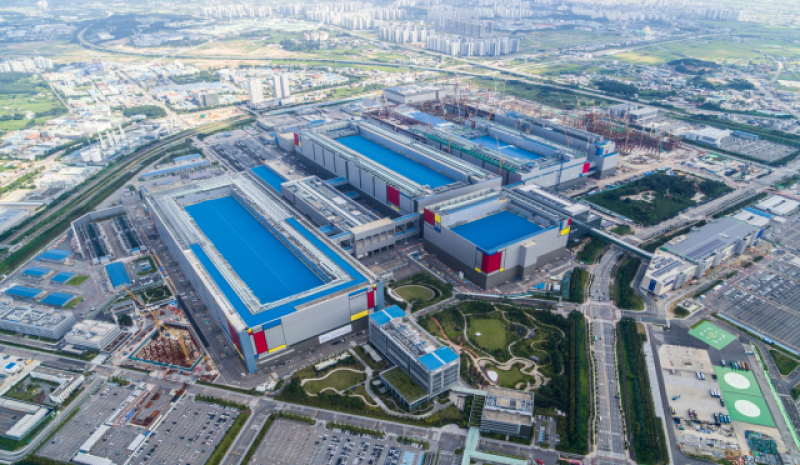⬤ Samsung Electronics is gearing up for a massive DRAM expansion as global demand for high-performance memory goes through the roof, fueled by nonstop investment in AI infrastructure. The company is converting part of its NAND flash production lines at Pyeongtaek and Hwaseong campuses into DRAM manufacturing. At the same time, Samsung's wrapping up Pyeongtaek Fab 4 as a DRAM-only facility using its latest 1c process technology.

⬤ This move comes as the memory market hits a serious supply crunch. DRAM, which powers the fast computation in CPUs and GPUs, has gotten really scarce as big-tech companies worldwide dump money into AI data centers. Industry sources say market demand for DRAM is now sitting at three times what Samsung, SK Hynix, and Micron can produce combined. Some companies are apparently willing to shell out up to 70 percent more for high-capacity server DRAM like 96GB and 128GB DDR5 modules, but still can't get their hands on enough supply.
Market demand for DRAM is now estimated at three times the combined supply capacity of Samsung, SK Hynix, and Micron.
⬤ Samsung currently makes both DRAM and NAND flash at Pyeongtaek Fab 1, Fab 3, and the Hwaseong campus, where P1 and Hwaseong run as hybrid production lines. Under the new plan, the company is cutting back NAND flash output at these spots and ramping up DRAM capacity instead. Meanwhile, Pyeongtaek Fab 4, which is almost done being built, will fire up next year as a sixth-generation 10-nanometer DRAM facility.
⬤ Once the upgrades wrap up—possibly as soon as the first half of next year—Pyeongtaek P1 and Hwaseong will be cranking out way more DRAM. The NAND production they're cutting domestically will get picked up by higher output at Samsung's Xi'an plant in China. With only three companies supplying the entire global DRAM market, Samsung's capacity push shows just how profitable DRAM becomes during tight supply, persistent shortages, and AI-driven demand that's not slowing down anytime soon.
 Eseandre Mordi
Eseandre Mordi

 Eseandre Mordi
Eseandre Mordi


